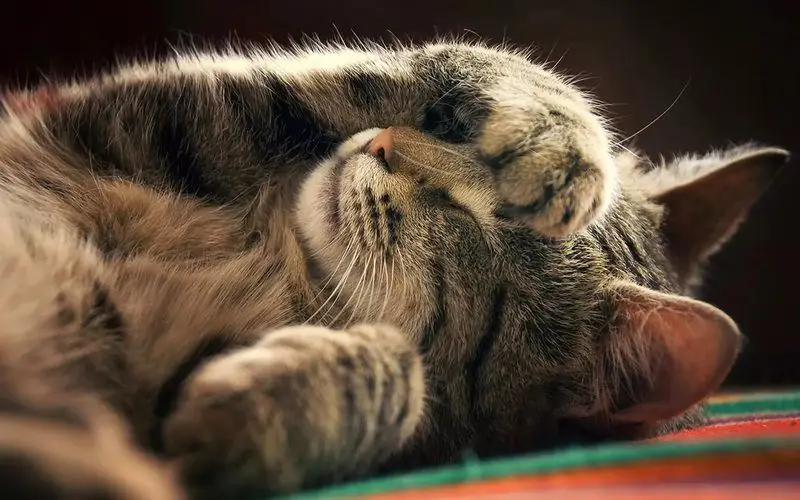
Table of contents:
- Aversectin ointment for cats: a champion of skin health
- Composition and release form of Aversectin ointment
- The mechanism of action of the agent
- Indications for the use of Aversectin ointment
- How to use the product correctly
- Contraindications and side effects
- Drug-drug interactions
- Analogues and approximate cost
- Cat owners reviews
- Veterinarian reviews
- Author Bailey Albertson [email protected].
- Public 2024-01-17 22:26.
- Last modified 2025-06-01 07:32.
Aversectin ointment for cats: a champion of skin health
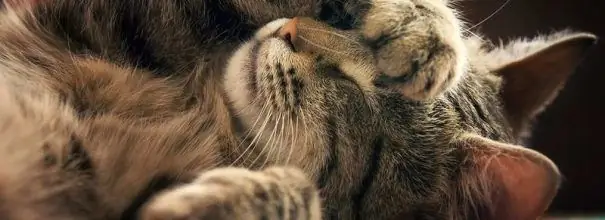
Aversectin ointment is a proven remedy that can effectively cope with both parasitic insect attacks on a cat and tick-borne skin infections. Knowledge of the main characteristics, as well as the peculiarities of using the drug, allows not only to effectively solve the problem, but also to save the budget.
Content
- 1 Composition and release form of Aversectin ointment
- 2 Mechanism of action of the agent
- 3 Indications for the use of Aversectin ointment
-
4 How to use the product correctly
4.1 Features of use in kittens and pregnant cats
- 5 Contraindications and side effects
- 6 Drug-drug interactions
-
7 Analogues and approximate cost
- 7.1 Table: Comparative overview of Aversectin Ointment with other insecticidal acaricidal agents
- 7.2 Photo gallery: insecticidal acaricides
- 8 Reviews of cat owners
- 9 Reviews of veterinarians
Composition and release form of Aversectin ointment
Aversectin ointment 0.05% is used in the fight against parasites of the skin of cats: insects and ticks. Produces Aversectin ointment LLC "Farmbiomedservice" (Russia).
The ointment is homogeneous, does not contain additional visible or tangible inclusions. Its color is white with some yellowness. The ointment has a slight specific odor.
100 g of ointment contains:
-
active substance:
aversectin C - 50 mg
-
Excipients:
- polyoxyethylene 1500;
- polyoxyethylene 400;
- glycerol.
The product is packaged in plastic containers containing 15, 20, 30, 60 and 500 g of ointment. Each container is equipped with a plastic lid, which provides control during the initial opening of the package.
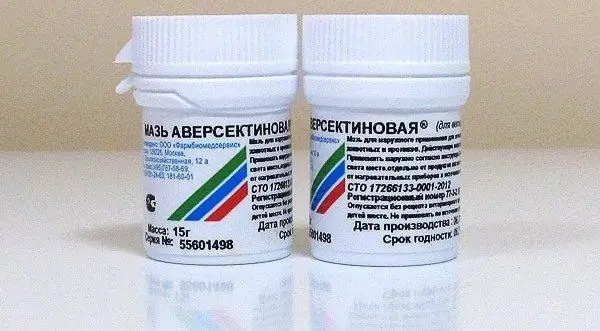
Plastic jars of ointment are equipped with caps with first opening control
Plastic containers have external markings that inform:
- name of the manufacturer of the medicinal product;
- trade mark;
- manufacturer's address;
- name of the medicinal product;
- how to use the drug;
- the mass of the product that the package contains;
- the name and content of the active ingredient;
- serial number;
- the date of manufacture of the drug;
- shelf life;
- conditions required for storing funds;
- veterinary use of the drug.
All packages of the product are provided with annotations for its use.
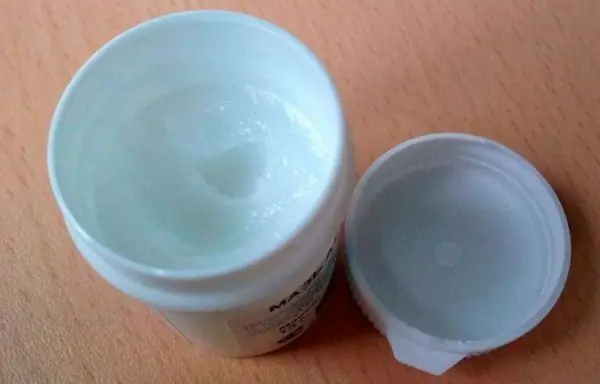
The ointment has a uniform consistency and white color, for example a yellowish tint
The mechanism of action of the agent
Aversectin ointment has:
-
contact exposure - causes the death of parasitic insects and ticks during their direct contact with the drug:
- on the surface of the skin;
- in the hair follicles of the coat;
- in the secret of the sebaceous glands of the skin, as well as in the glands themselves;
- systemic exposure - it is able to be absorbed from the site of application and enter the general bloodstream, being distributed in the blood and tissue fluid. This is detrimental to parasites feeding on blood and tissue fluid that have not come into contact with the applied drug. The maximum concentration of Aversectin C contained in the bloodstream is reached 3-5 days after using the agent.
Aversectin C is characterized by a long-term effect, it is not metabolized in the body, being excreted by the intestine in an unchanged form 10-12 days after application.
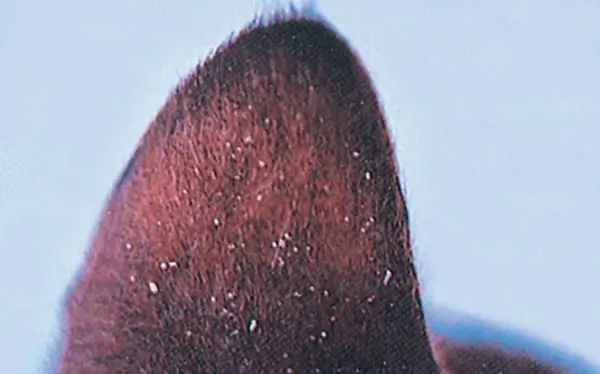
Lice in cats are rare, affecting mainly sick and weakened pets
Aversectin ointment is therapeutic in cats for:
-
larvae and adult forms of sarcoptic mites:
- Notoedres cati - causative agent of notoedrosis;
- Otodectes cynotis - the causative agent of otodectosis (ear scabies);
- Sarcoptes canis - the causative agent of sarcoptic mange;
- demodectic mites: Demodex cati - the causative agent of feline demodicosis, which is not indicated in the annotation, apparently due to the relative rarity of this disease among cats;
-
parasitic insects:
- Ctenocephalides felis - fleas;
- Linognathus setotus - lice;
- Trichodectes subrostratus - lice.
Aversectin C, the active ingredient of the ointment, changes the transmembrane transport of chlorine ions in the cells of parasitic insects and ticks, which entails the onset of persistent paralysis and subsequent death.
Aversectin ointment, according to the assessment of the degree of influence on living organisms, was recognized as a low-hazard substance. Subject to the rules of use specified in its annotation, it does not have:
- irritating effect on the skin;
- toxic effects on the cat's body when the drug is absorbed;
- pronounced ability to provoke allergic reactions in cats;
- embryotoxic effect - does not cause fetal malformations during pregnancy in cats, which usually leads to early miscarriages;
- teratogenic - does not cause fetal malformations, which can also lead to late miscarriages and stillbirth, limited viability of kittens, as well as malformations in them;
- mutagenic - it does not have a negative effect on the hereditary apparatus of cells, causing its damage, which is transmitted to subsequent generations of cells during the reproduction of the damaged DNA molecule.
Usually, treatment with Aversectin Ointment is well tolerated by cats, regardless of their breed and age.
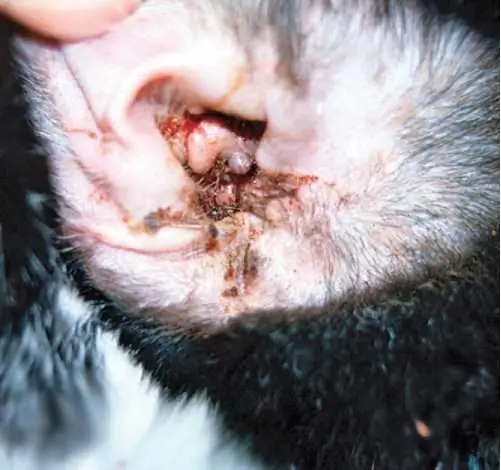
With otodectosis, mites affect the inner surface of the auricle and the external auditory canal; a large amount of dark discharge forms in the ear and secondary otitis media begins; unlike sarcoptic mange and demodicosis, odetectosis in cats is common
Indications for the use of Aversectin ointment
Aversectin ointment is prescribed for cats with the following diseases:
- sarcoptic mange;
- notoedrosis;
- otodectosis;
- demodicosis;
- entomoses.
Aversectin ointment also affects the causative agents of human demodicosis, but it should not be used in humans. Safe for use in animals, when on human skin, the ointment can be irritating or cause allergies. Aversectin C trapped from the surface of the skin into the human systemic circulation can cause nausea. Therefore, the manufacturer labels Aversectin Ointment as a medicine for veterinary use, since human skin and animal skins differ in structure, and there are also physiological differences that limit the safe use of Aversectin Ointment in humans.
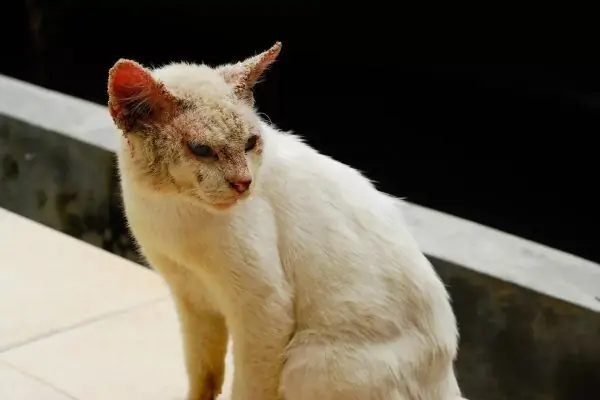
The causative agent of notoedrosis affects the scalp of cats, otherwise the disease is called "head scabies"; characterized by severe itching, the formation of scabs and scabs, the addition of secondary inflammation, the development of pyoderma is possible
How to use the product correctly
Treatments with Aversectin ointment are carried out once every 5-7 days; this may require from 2 to 5 applications of the agent. The goal of treatment is considered achieved when the cat is recovered, accompanied by the complete disappearance of the symptoms of the disease, as well as in case of tick lesions, two successively conducted microscopic examinations of skin scrapings, confirming the disposal of the pathogen. If it is necessary to treat large areas of the skin, then in order to prevent an overdose of Aversectin C, this is done fractionally, first treating one half of the body, the next day the rest of it is treated. If there is any doubt about the size of the skin area in a particular cat that is safe for a single treatment, you should seek the advice of a veterinarian. For maximum convenience, the ointment can be melted by dipping it in its original packaging in hot, but not boiling water. When working with the ointment, be sure to use medical gloves.
Application of Aversectin Ointment:
-
With sarcoptic mange, notoedrosis and demodicosis:
- It is necessary to trim the hair on the affected areas; it is preferable to use scissors over a razor, as this will help prevent damage to the skin.
-
They soften and remove the existing crusts, for this they use:
- bathing the cat with exfoliating shampoos for large areas of damage;
- hydrogen peroxide;
- chlorhexidine solution;
- warm water.
- Wipe the prepared surfaces dry.
- With a plastic or glass spatula, the ointment is applied in an even thin layer to the affected areas, capturing 1 cm of the adjacent healthy skin area in order to prevent the spread of the pathogen. The ointment is applied by lightly rubbing into the skin, facilitating its penetration into the sebaceous glands and hair follicles.
- An Elizabethan collar is put on the cat so that it does not lick the ointment. If the cat is combing the treated areas, an additional blanket is used. The collar is not removed until the product is completely dry. Most often, a two-time treatment is enough for a cat to recover;
-
With otodectosis:
-
The ear is cleaned with a napkin from sulfur, inflammatory exudate and crusts using:
- special hygiene lotion;
- chlorhexidine solution;
- olive oil.
- Dry the skin prepared for applying the ointment with a napkin.
- Melt the aversectin ointment.
- With a napkin dipped in ointment, rub the skin of the inner surface of the ear and the visible part of the external auditory canal. You can inject 1-2 drops of ointment into the ear canal using a pipette.
- The ear is folded and gently massaged, achieving an even distribution of the product.
- The skin of the outer surface of the auricle, as well as the skin and hair adjacent to the ear, are treated with a napkin with Aversectin ointment, lightly rubbing the product.
- Repeat the procedure with applying the medicine to the other ear, even if it looks healthy and does not bother the cat. Be sure to use other wipes for the second ear to avoid transferring the mites.
- A protective collar is put on to prevent self-harm of the auricle. Usually, a two-time treatment is sufficient for the cat to recover;
-
-
If infested with fleas, lice or lice:
- The wool is not cut.
- The ointment is rubbed into the skin using a soft brush. In the absence of a brush, you can use a tissue or cotton-gauze swab. The application of the product is carried out against the growth of wool, paying the greatest attention to the places of accumulation of parasites. Only one half of the cat's body is treated.
- The treated wool is combed with a comb, evenly distributing the ointment.
- Put on a protective collar on the cat.
- After a day, repeat the procedure with the other half of the body. Usually one full treatment is enough for the cat to recover. If necessary, repeat the application of the ointment, but not earlier than one month.
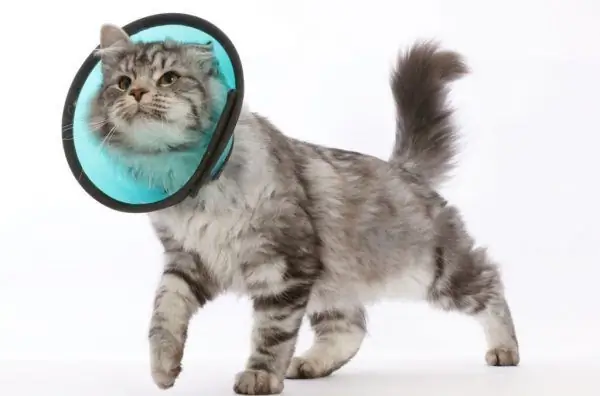
A protective collar is required when using Aversectin Ointment until it dries completely, otherwise the cat will lick it
After treatment, the cat is not stroked for 24 hours, and its access to small children is also limited
In the annotation, the manufacturer focuses on the need to use Aversectin ointment in complex therapy with the development of complications of parasitic invasions by inflammatory processes caused by bacteria or fungi, which are not covered by the action of Aversectin C. And treatment with Aversectin ointment does not exclude the need to use other therapies, for example, immunomodulators weakened pets. The manufacturer emphasizes the importance of taking measures to prevent re-infection after treating the cat, since otherwise the disease will inevitably return when the therapeutic effect of Aversectin C is completed, since the eggs of fleas, lice, ticks and lice can remain in the apartment, as well as surviving adults.
Features of use in kittens and pregnant cats
Aversectin ointment is prohibited for use in pregnant and lactating cats. Also, it is not used when processing kittens up to two months of age.
Contraindications and side effects
Complications and side effects when using the drug in accordance with its annotation are not observed. In some cases, there may be a manifestation of a hypersensitivity reaction to the ingredients included in the product, which is manifested by signs of skin irritation - the appearance of redness, increased skin itching, rashes on the skin in the form of vesicles (bubbles) and papules (tubercles) are possible. In this case, the product is removed from the surface of the cat's skin, first with dry napkins, then with warm water and detergent. In conclusion, areas of irritated skin are rinsed with plenty of clean water and the cat is given an antihistamine (Tavegil, Suprastin).
Aversectin ointment treatments are contraindicated:
- during the course of an infectious disease;
- recovering pets;
- with severe underweight;
- during pregnancy and breastfeeding;
- small kittens up to 2 months of age.
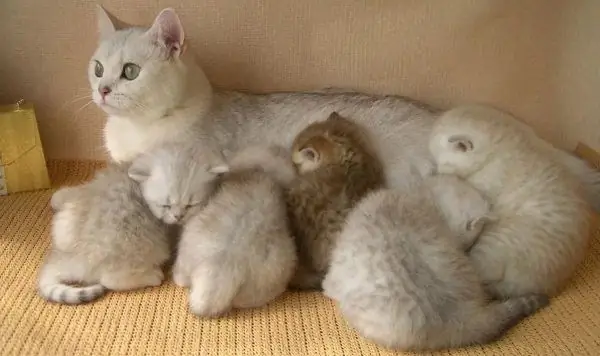
Aversectin ointment is contraindicated in pregnant and lactating cats, as well as kittens under 2 months of age
Drug-drug interactions
To prevent overdose, it is forbidden to use Aversectin ointment both in conjunction with products containing Aversectin C, and with other antiparasitic drugs.
Overdose symptoms are:
- salivation;
- muscle tremors;
- weakness.
There are no specific antidotes that cause inactivation of Aversectin C. Treatment aimed at the earliest possible withdrawal of the drug from the body is carried out by a veterinarian. Usually includes fluid therapy, diuretics, intestinal sorbents, and laxatives.
Analogues and approximate cost
Aversectin ointment can be considered in conjunction with other agents that are effective against skin tick-borne infections and parasitic insects.
Table: Comparative overview of Aversectin Ointment with other insectoacaricidal agents
| A drug | Structure | Indications | Contraindications | Application | Price, rub |
| Aversectin ointment | Aversectin C | Invasions by skin mites, lice, fleas, lice | Pregnancy, lactation, age up to 2 months, exhaustion, infectious diseases, convalescence | 2 to 5 applications to affected areas once every 5-7 days | from 55 |
| Front Line Spot He; drops on the withers | Fipronil | Prevention of an attack of ixodid ticks; prevention and treatment of infestation by lice, fleas, lice; treatment of sarcoptic mange and otodectosis | Infectious diseases, convalescence period; weakened pets; kittens under 8 weeks old; with body weight less than 1 kg | Once every 4 weeks to protect against ticks and treat tick-borne lesions; Once every 4-6 weeks for the prevention and treatment of parasitic insect infestations. The withers are applied to the skin; with otodectosis, they are buried in the ears. Does not have a systemic effect, is deposited in the skin | 485 |
| Stronghold; drops on the withers | Selamectin | Treatment and prevention of parasitic insect infestations; tick-borne infections - otodectosis, sarcoptic mange; invasions by helminths - toxocars, hookworms. Prevents dirofilariasis. Does not protect against attack by ixodid ticks | Do not use on kittens under 6 weeks of age; do not bathe and pet the cat for the first 2 hours after applying the drug | It is applied to the skin of the withers once a month for both treatment and prevention. With otodectosis, it is possible to apply to the skin of the auricle | 386 |
| Amidel-gel Neo | Cyfluthrin, chloramphenicol, lidocaine | Notoedrosis, sarcoptic mange, otodectosis complicated by bacterial infection | The presence of hypersensitivity to the components of the drug, pregnancy and lactation, age less than 4 weeks | Application to affected surfaces 2-5 times with an interval of 5-7 days | 192 |
Photo gallery: insectoacaricidal agents
-

Amidel gel - Amidel gel has acaricidal and analgesic effects
-

Stronghold - Stronghold has a wide range of antiparasitic action: it is effective against tick-borne skin infections, parasitic insects, and round worms
-

Frontline Spot On - Front Line Spot It comes in the form of pipettes
Cat owners reviews
Veterinarian reviews
Aversectin ointment is an insectoacaricidal preparation of a wide spectrum of action, destructive both for parasitic insects and for ticks, causative agents of otodectosis, demodicosis, notoedrosis and sarcoptic mange. The agent has a contact and systemic effect, destructive for all forms of parasite development. The relative labor input when using the product in comparison with drops is compensated by its low price. In case of a complicated course of the disease, it needs to be included in the complex of drug therapy, since, in addition to insectoacaricidal, it does not have other effects.
Recommended:
Frontline For Cats: Instructions For Use, Spray And Drops, Indications And Contraindications, Analogs, Reviews, Price
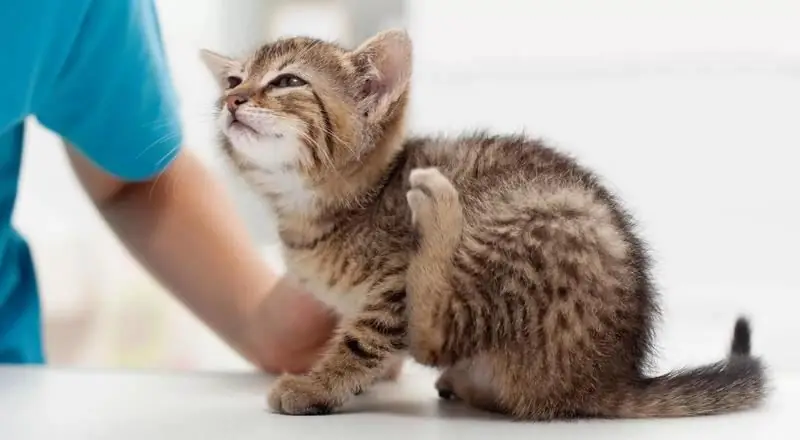
How and from what Front Line protects the cat: mechanism of action, scheme of application. Contraindications, side effects. Prices and analogues. Reviews of owners and veterinarians
Catosal For Cats: Instructions For Use In Veterinary Medicine, Indications And Contraindications, Dosage, Reviews And Analogues
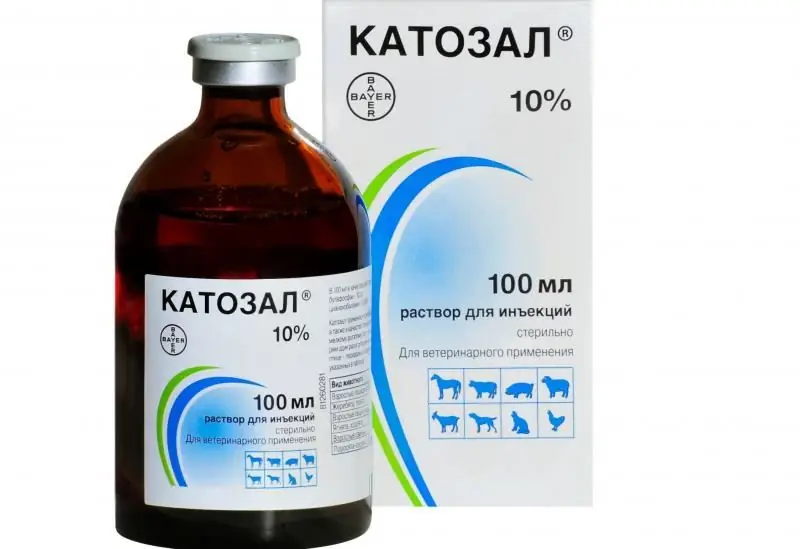
What is the drug Catosal used for in cats? What effect does the product have? Are there any contraindications and side effects? Reviews about the drug
Gestrenol For Cats: Instructions For Use, Drops And Tablets, Indications And Contraindications, Reviews, Cost And Analogues
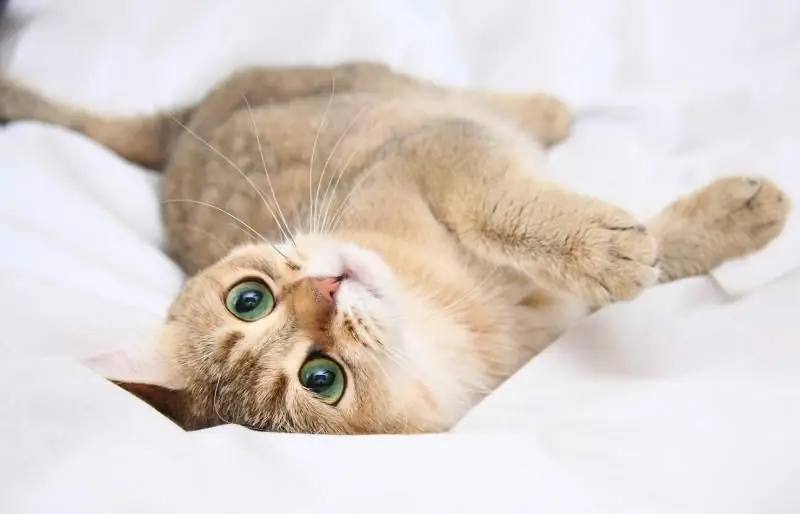
What is Gestrenol used for? Composition and form of release. Contraindications, side effects. Interaction with medications. Drug analogues. Reviews
Ear Mite (otodectosis) In Cats And Cats: Photos, Symptoms Of The Disease And Its Treatment At Home (including A Kitten), Reviews
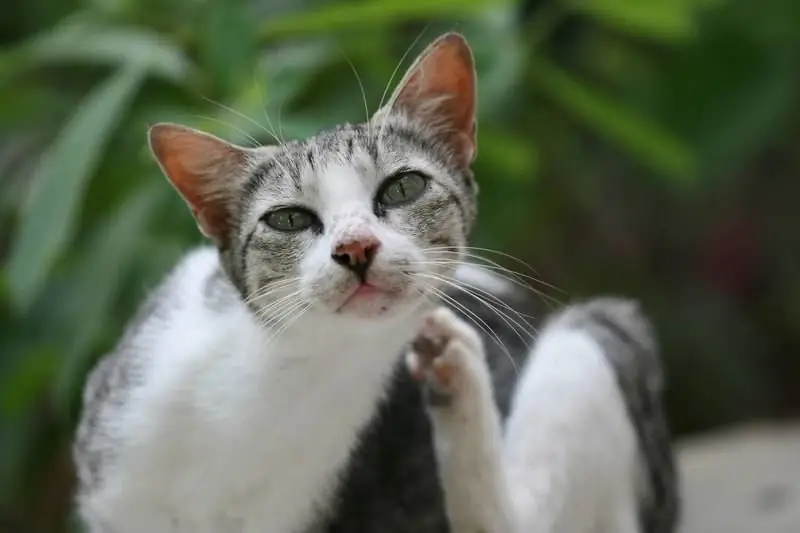
Description of the causative agent of otodectosis, how the infection occurs, the symptoms of the disease. How to diagnose and treat otodectosis. Preventive measures
Baytril: Instructions For Use In Veterinary Medicine, Indications For Treatment In Cats, Contraindications, Reviews, Cost And Analogues
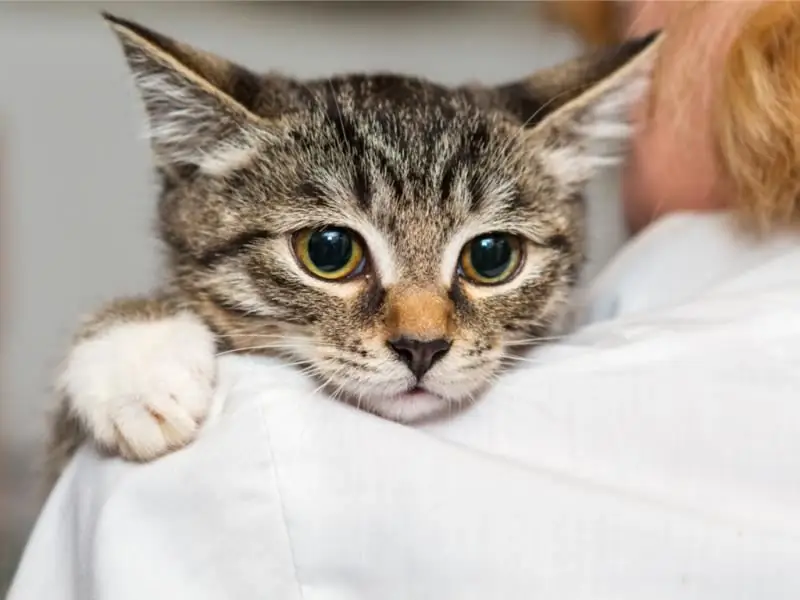
What infections is Baytril used against? Mechanism of action and treatment regimen. Contraindications, side effects. Analogs. Reviews of veterinarians and cat owners
